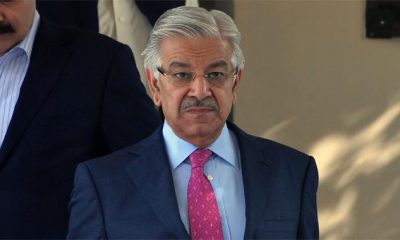World
Meeting to set agenda for Saarc summit begins

Kathmandu: A day-long joint secretary-level meeting began here Saturday to set the agenda for the 18th Saarc Summit and give final touches to the Kathmandu Declaration.
“Joint secretaries of the respective foreign ministries of the member states will participate in the meeting and discuss various Saarc related agendas,” Nepal’s Foreign Minister Mahendra Bahadur Pandey said Friday.
The 49th session of the if needed, will rewrite, adjust, or add value to the Kathmandu Declaration that has already been forwarded to the member states, Pandey added.
Stressing implementation of the past pacts and accords, the proposed 32-point Kathmandu Declaration talks about deeper integration among the member states for peace and prosperity.
The inputs of the Saarc Programming Committee will be forwarded to a foreign secretary level meeting, also called the Saarc Standing Committee, which will look into the declaration or polish it and look at other agendas of the regional grouping.
The standing committee meeting is slated for Nov 23 and 24.
The 36th session of the Saarc Council of Ministers scheduled for Nov 25 will add the policy level inputs, if any, as recommended by the secretary level meeting and give the final shape to the declaration.
The summit meeting at heads of the state level will take place Nov 26.
On Nov 27, a retreat to Dhulikhel, about 30 km from the capital Kathmandu, will be organised for the visiting heads of state and governments to hold bilateral and multilateral talks.
“We have made enough preparation for VIPs to spend quality time with each other to deepen mutual trust,” said Pandey.
After spending over two hours in Dhulikhel, the visiting delegates will return to the summit venue for the closing session which will also see adoption of the Kathmandu Declaration.
World
Lockdowns in China Force Urban Communities to Defy Censorship and Vent Frustration Online

Shanghai’s rich middle class is leading a wave of online dissent over the strict and prolonged lockdowns imposed in various parts of the country. Chinese internet censorship is struggling as patience is wearing thin in many urban centers, coming up with creative forms of online protests.
Social Media Posts Revealing Lockdown Tension in Shanghai
Drawn-out lockdowns are nothing new in China as authorities insist with the nation’s zero-Covid policy since the start of the pandemic. Currently over This time around, however, metropolitan areas like Shanghai are increasingly difficult to keep quiet, given that its more than 25 million residents have seen weeks of total isolation along with food shortages and many other service interruptions.
Dozens of towns and reportedly over 300 million Chinese citizens have been affected by lockdowns of different severity. As expected, urban netizens have been most outspoken over their difficulties by finding creative ways to get around state censorship and bans placed on topics, news comments and spontaneous campaigns.
Shanghai residents have been using mobile proxies and hijacking seemingly unrelated hashtags to talk about healthcare issues, delivery failures and the overall severity of their situation. The “positive energy” that the Chinese government wants to transmit during the recent prolonged series of lockdowns does not come naturally to those counting food supplies and online censors are working hard to filter words, trending topics and undesired social media sharing.
WeChat groups and message threads are under constant monitoring. Posts questioning the zero-Covid approach have been quickly deleted, including by leading Chinese health experts like Dr. Zhong Nanshan. Video footage is soon censored and protests and investigations are quickly made to disappear.
Where this has not worked, officials have exposed banners with warnings and outright threats like “watch your own mouth or face punishment”, while drones have been patrolling the city skies. Yet, if anything, this has led to further tensions and unspoken confrontation with Shanghai’s educated and affluent middle class.
Creative Online Solutions Harnessing Civic Energy
Announcements by Chinese social media that they would be publishing the IP addresses of users who “spread rumors” have not helped either. Tech industry research has shown that much of Asia’s tech-savvy population has a habit of using mobile proxies and other privacy tools, quickly finding workarounds to browse the internet freely and talk to the world about the hottest topics.
The sheer volume of forbidden posts is already a challenge for the very censorship system, experts explain. Unable to track all trending hashtags, state workers overlook topics that speak about the US, Ukraine or other popular news. Linking human rights elsewhere to their situation, Chinese online dissidents establish their informal channels and “hijack” the conversation to share personal or publicly relevant information about the Covid suppression in their town.
Sarcastic and satirical posts still dominate. Others hope to evade the censors by replacing words from famous poems or the national anthem. One thing is certain – social media, when harnessed with the right creativity, has proven its ability to mount pressure on the government in even some of the most strictly controlled tech environments like China.





















